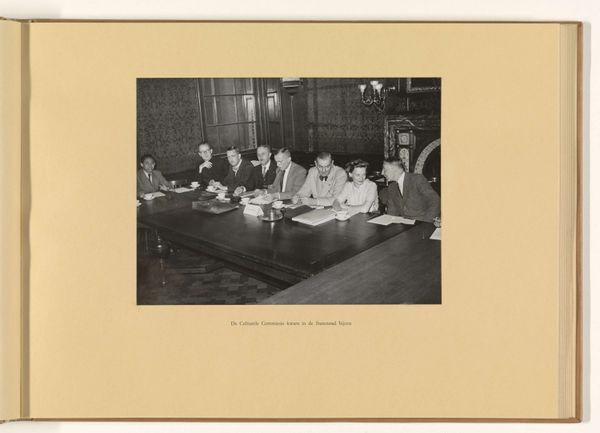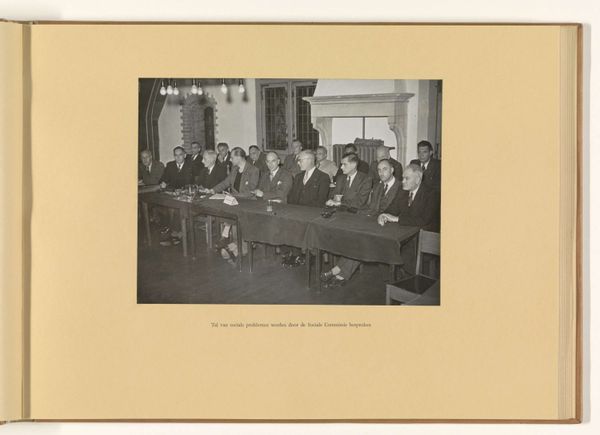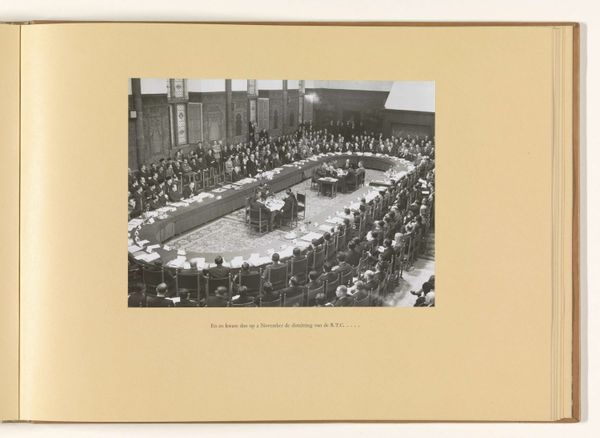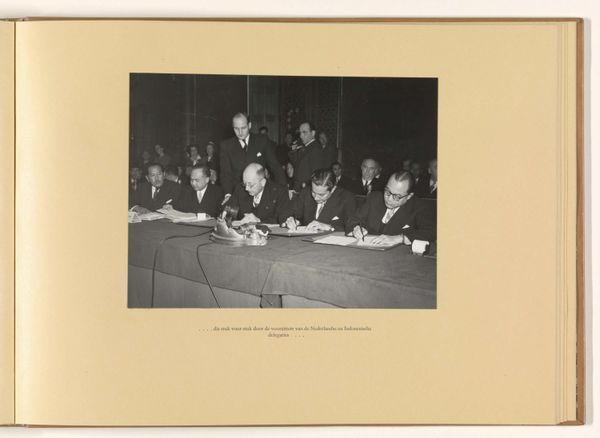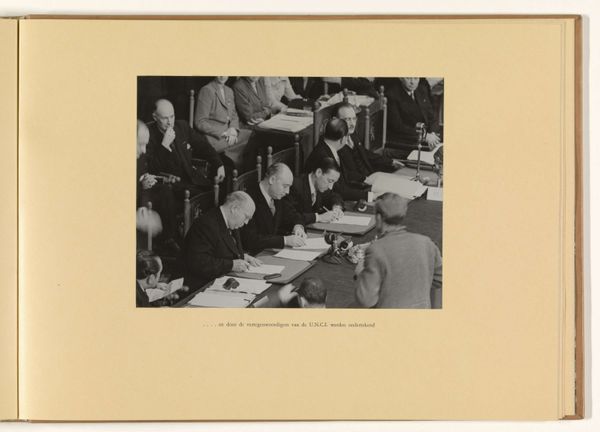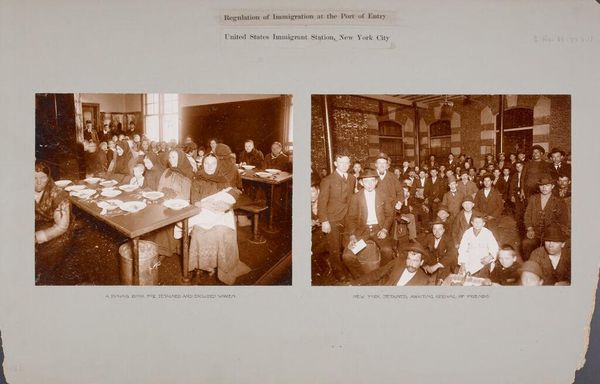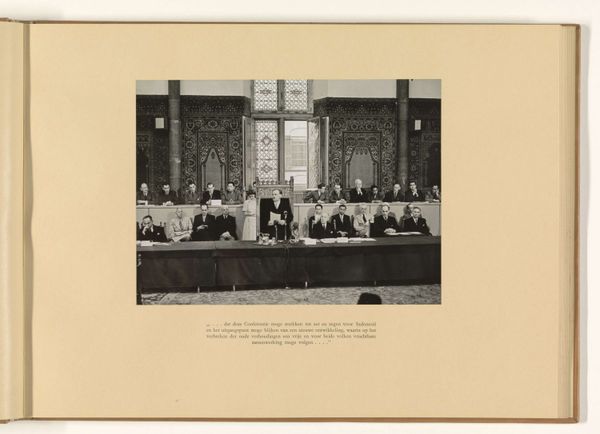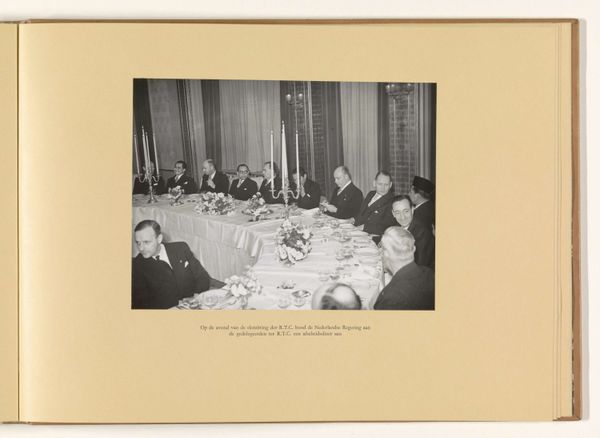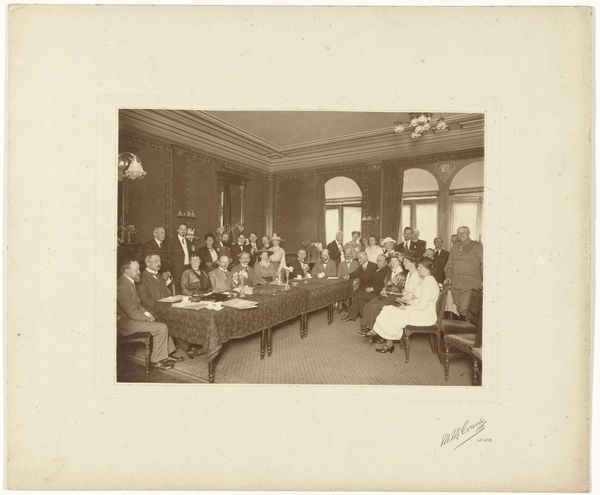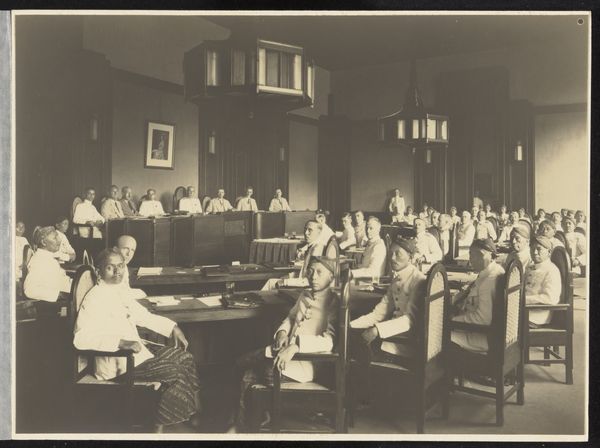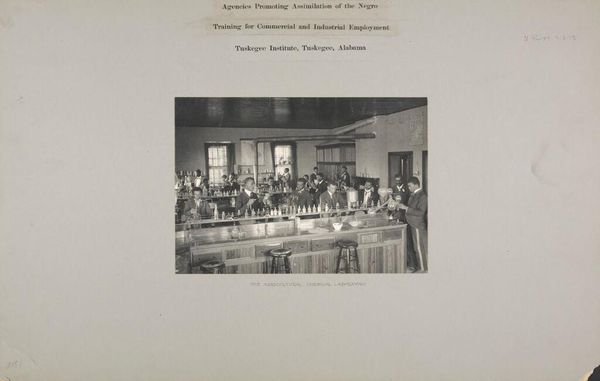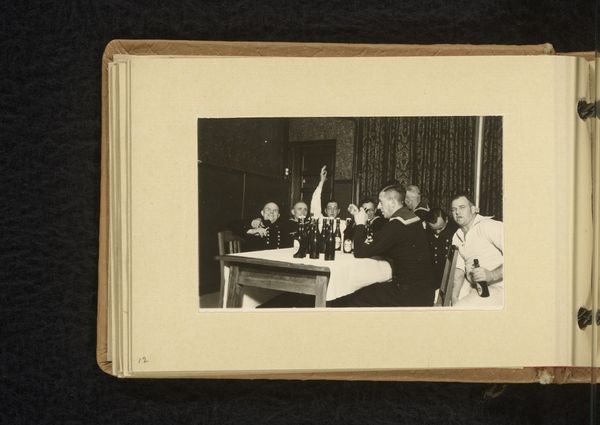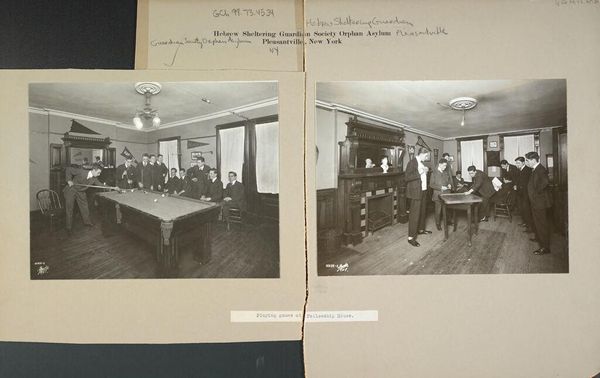
Vele waren de vraagstukken, welke de financiëel-economische Commissie in de Lairessezaal kreeg op te lossen Possibly 1949
0:00
0:00
photography, gelatin-silver-print
#
photography
#
group-portraits
#
gelatin-silver-print
#
genre-painting
#
modernism
#
realism
Dimensions: height 170 mm, width 226 mm, height 292 mm, width 400 mm
Copyright: Rijks Museum: Open Domain
Editor: This gelatin silver print, potentially from 1949, titled "Vele waren de vraagstukken, welke de financiëel-economische Commissie in de Lairessezaal kreeg op te lossen," seems to depict a formal meeting. There's a stillness, a weightiness to the scene that suggests serious deliberation. It almost feels voyeuristic, like peering into a pivotal moment in history. What strikes you about it? Curator: It makes me think of smoke-filled rooms and hushed conversations. Of course, being black and white adds to the seriousness, but what grabs me is how the photographer captured a very specific moment of Dutch post-war reconstruction. Notice how the faces are mostly obscured, the backs of heads dominating the foreground. It subtly speaks to the anonymity of decision-making bodies, the weight of collective responsibility. Do you think it's a flattering portrayal? Editor: Not exactly! It's realistic, maybe even a bit critical? The lack of individual focus gives it a documentary feel, which seems fitting given the title and presumed context. I find myself wondering about the story behind that woman writing, while surrounded by so many men. Curator: Exactly! That visual tension says so much. It's almost theatrical in its composition, don't you think? The dark wood panelling acting as the backdrop. But where it shines is not aesthetic alone: consider how it captured a key post-war Dutch institution. These faces – though nameless – they were busy shaping a country! Editor: I hadn't thought of it as theatrical before, but I see what you mean. Now it feels like a play with serious consequences! This feels different from viewing a typical posed photograph; this tells a silent story of meetings and compromises. Curator: I agree! It reminds me to ask the bigger questions lurking in ordinary pictures. What are we not seeing, and why does the artist focus where they do? A true record can open up new windows. Editor: Absolutely, and a lot more nuanced than I initially thought. This has reshaped how I look at documentary photos from now on.
Comments
No comments
Be the first to comment and join the conversation on the ultimate creative platform.
